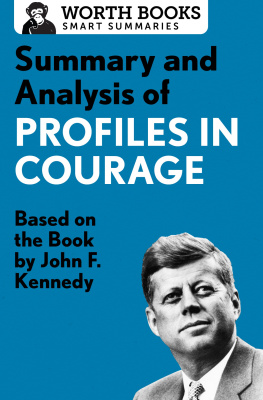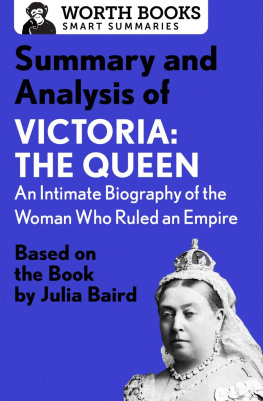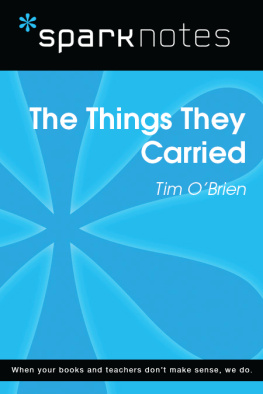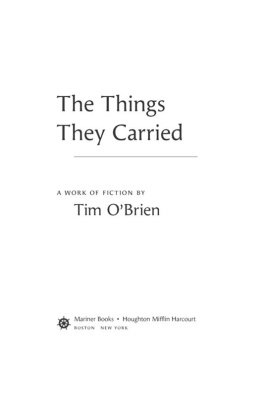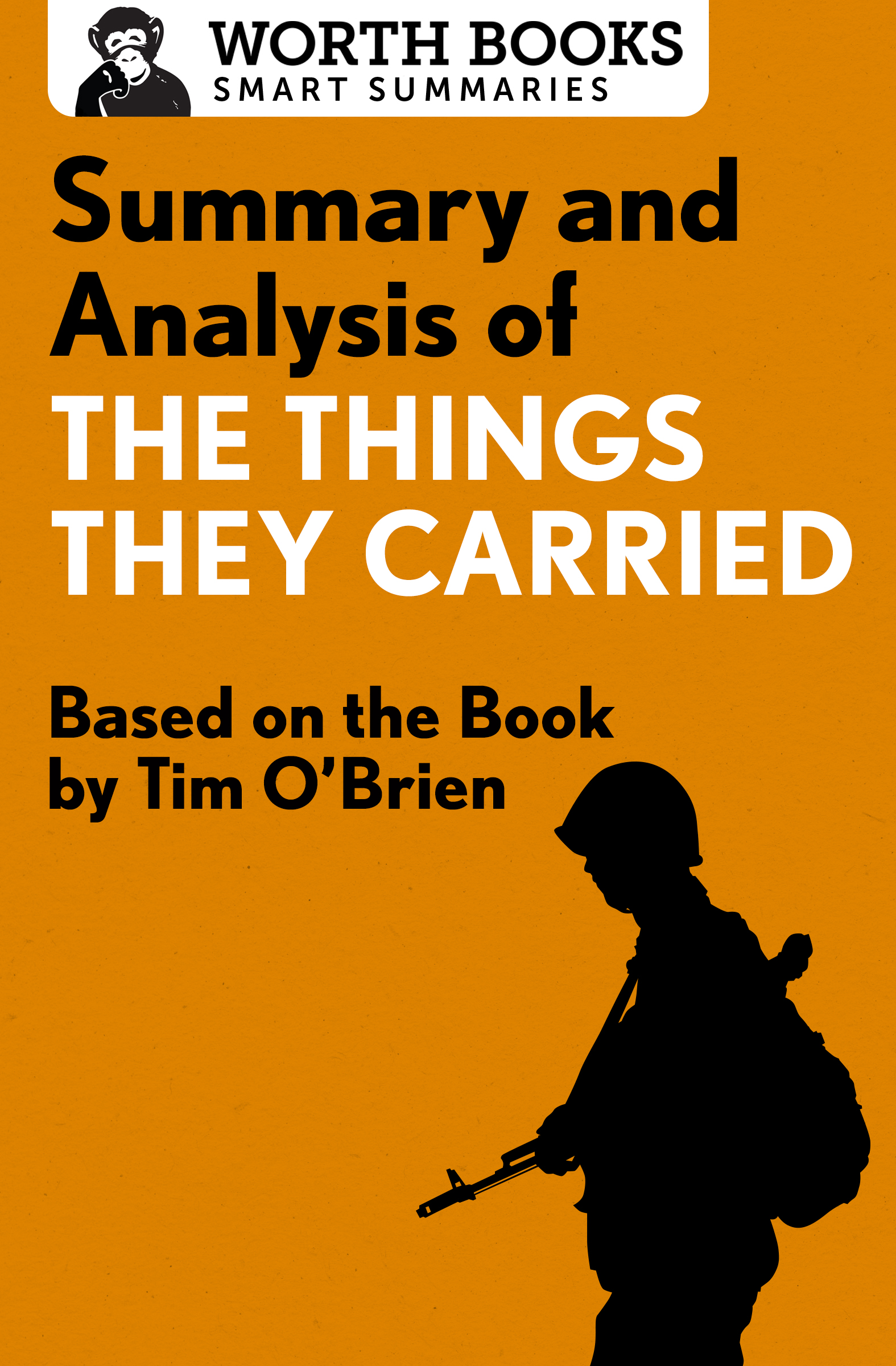Summary and Analysis of
The Things They Carried
Based on the Book by Tim OBrien

Contents
Context
The Things They Carried was originally published in 1990, fifteen years after the fall of Saigon brought an end to the Vietnam War. Tim OBrien served as an infantryman during the war and wrote his first two books on his experiences: the memoir If I Die in a Combat Zone: Box Me Up and Ship Me Home (1973) and the National Book Awardwinning novel Going After Cacciato (1978). Most of the longer stories in The Things They Carried had previously been published in magazines and literary journals. However, many of the shorter pieces, including Love, Notes, and Good Form, first appeared in the book and are crucial to its novel-in-stories form and its key themes.
The national trauma of the Vietnam Wara conflict that bitterly divided Americans and demoralized the countrys armed forcesled to a wave of books and films attempting to make sense of the experience. The tone and content of these creative efforts varied widely, but many of the earliest and most influential, including Michael Herrs New Journalism book, Dispatches (1977), and Francis Ford Coppolas blockbuster film Apocalypse Now (1979), employed bold formal innovations and hallucinatory imagery in an effort to capture the surreal nature of the war. These works were strongly associated with the anti-war movement and sought to bring home to American audiences the shattering experience of fighting in Vietnam. By 1990, however, the focus had shifted to how the nation and its veterans might recover from the war. This guiding interest connects such disparate works as Bobbie Ann Masons acclaimed novel In Country (1985), the coming-of-age story of a girl whose father died in Vietnam, and the hugely popular Rambo films starring Sylvester Stallone as a former Green Beret practicing guerilla warfare tactics against corrupt law enforcement officials and Americas Cold War enemies.
The Things They Carried synthesizes these two trends in Vietnam War literature. Updating a formatthe linked story collection, or novel-in-storiesclosely associated with Sherwood Andersons Winesburg, Ohio (1919), OBrien conveys how strange and terrible it felt to be an American foot soldier in Vietnam, and testifies to the power and the limitations of storytelling in helping the wars survivors to heal. The books artful blend of fact and fiction, memory and imagination, has made it an essential work of art about war and trauma, and a staple of English and creative writing courses all over the world.
Overview
Twenty years after his tour of duty in Vietnam, Tim OBrien tells stories about his fellow foot soldiers in Alpha Company. Although the protagonist of The Things They Carried shares a name and a similar biography with the real Tim OBrien, he is a fictional character. The blend of fact and fiction, or happening-truth and story-truth, is one of the novels key themes.
Some soldiers did not make it home from the war. Ted Lavender was shot in the head by a sniper. Curt Lemon was playing a game of catch with a smoke grenade when he stepped on a land mine and was blown to pieces. Kiowa, one of the best-loved members of Alpha Company and OBriens closest friend, died during a mortar attack. The platoon was camped in a swampy, foul-smelling field, and Kiowa sank deep into the muck and couldnt be pulled out until the next day.
The soldiers who survived are haunted by memories and guilt. First Lieutenant Jimmy Cross blames himself for Lavenders death because he was daydreaming about a girl when it happened. Norman Bowker went back to his hometown in Iowa, but found he couldnt talk to anyone about the war. He hanged himself in a YMCA locker room. Tim OBrien considers himself a coward for going to a war he did not believe in. He has recurring visions of a young Vietnamese soldier he killed outside the village of My Khe, and struggles to come to terms with the role he played in Kiowas death.
Through the magic of storytelling, OBrien can bring the dead members of Alpha Company back to life. He learned to do this when he was nine years old and his classmate and first love died of a brain tumor. Storytelling has also been crucial to OBriens healing process. By objectifying his experience he can separate himself from it, thereby gaining the necessary distance to make peace with memoriesgood, bad, and bizarrethat might otherwise be paralyzing. His nine-year-old daughter thinks OBrien writes war stories because he is obsessed with Vietnam, but only through a storys unique mix of memory and imagination can he hope to understand what happened during the war, and his feelings about it.
Cast of Characters
Azar: One of the youngest members of Alpha Company. He has a cruel and twisted sense of humor and a lust for battle. Only Kiowas death seems to affect him emotionally.
Mary Anne Bell: The high school sweetheart of a medic stationed on a hill overlooking the Song Tra Bong. During a visit to Vietnam, she is transformed from an all-American girl into a bloodthirsty soldier. Last seen walking into the mountains alone, she is said to have crossed over to the other side and become a part of the land itself.
Elroy Berdhal: The proprietor of the Tip Top Lodge on the Rainy River in northern Minnesota. He seems to know that OBrien is thinking about dodging the draft, but doesnt raise the topic. He brings OBrien to within a few yards of the Canadian border and bears witness to his decision to go to war.
Norman Bowker: A quiet and gentle soldier who wishes his father wasnt so concerned with winning medals. After the war, he suggests that OBrien write a story about a veteran who feels like he died in Vietnam and drives around town all day with nowhere to go and no one to talk to.
First Lieutenant Jimmy Cross: A platoon leader in Alpha Company. He is solitary and thoughtful, but frequently distracted. He cares about his soldiers but longs to leave the war and be with Martha, a college classmate who sends him letters but does not love him.
Henry Dobbins: The platoon machine gunner. A big man, he is a superb soldier but unsophisticated and drawn to sentimentality. He wears his girlfriends stockings around his neck as a good-luck charm and thinks about becoming a monk after the war.
Dave Jensen: A well-prepared soldier who practices field hygiene. After snapping Lee Strunks nose in a fight over a missing jackknife, he breaks his own nose so theyll be square.
Bobby Jorgenson: Replaces Rat Kiley as the platoons medic. He botches the patch job when OBrien is shot for the second time, but becomes a valued member of the platoon. He endures OBriens elaborate revenge plot with honor and self-control.
Bob Rat Kiley: A courageous and skilled medic. He carries comic books and M&Ms and is devastated by Curt Lemons death. When he starts to have hallucinations, he shoots himself in the foot in order to escape the war.
Kiowa: The best-loved member of Alpha Company and Tim OBriens closest friend. He carries an illustrated New Testament, a pair of moccasins, and his grandfathers old hunting hatchet. He is moral and compassionate.
Ted Lavender: The mellowest member of Alpha Company. He takes tranquilizers and smokes marijuana in order to cope with his fear. He is the first man to die under Lieutenant Crosss watch.
Curt Lemon: A member of Alpha Company with a tendency to play the tough soldier role. He brags about his crazy exploits, including the Halloween when he painted his body and went trick-or-treating wearing nothing but a mask, boots, and his M-16, and has either a too high or a too low opinion of himself.



